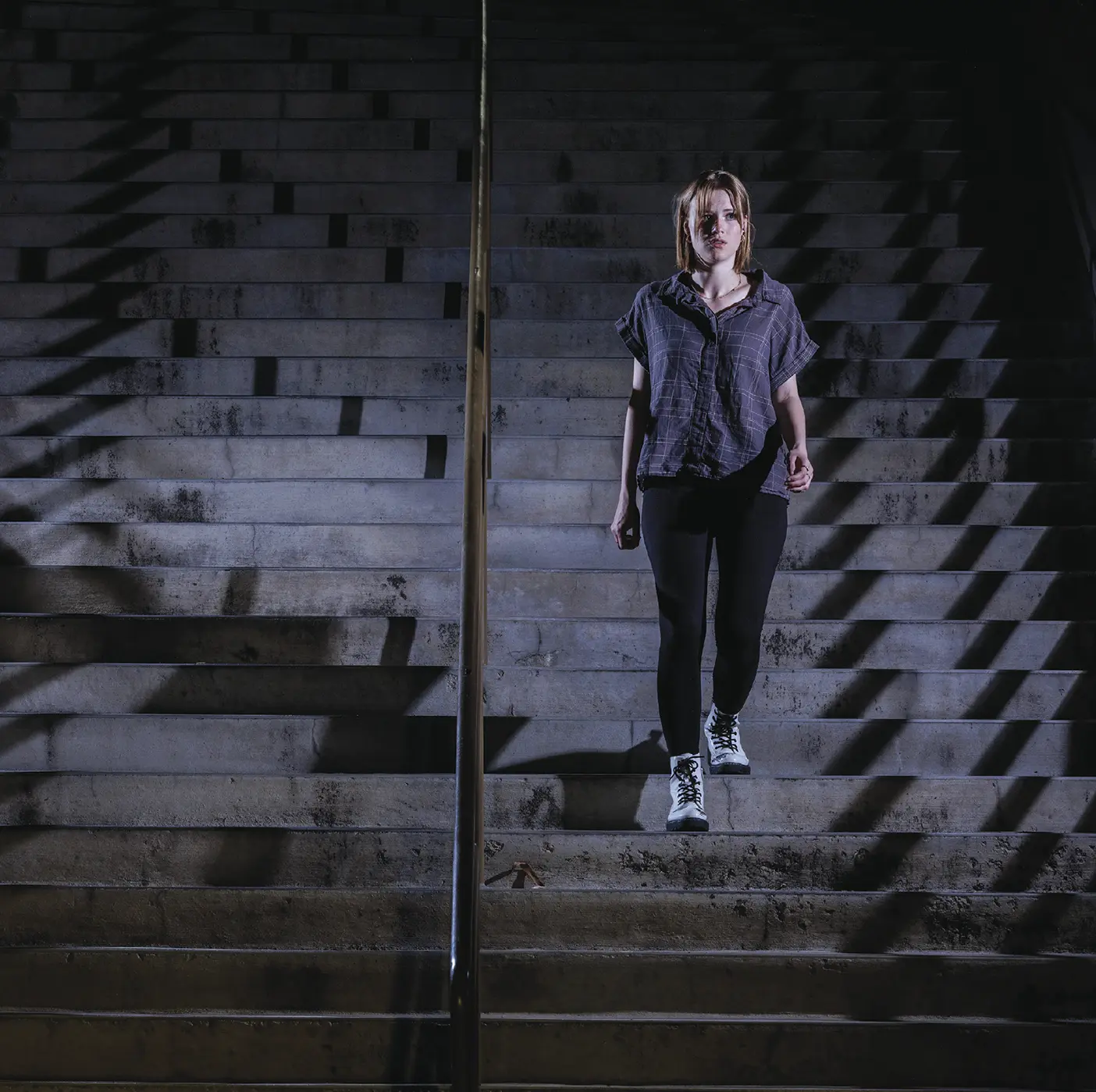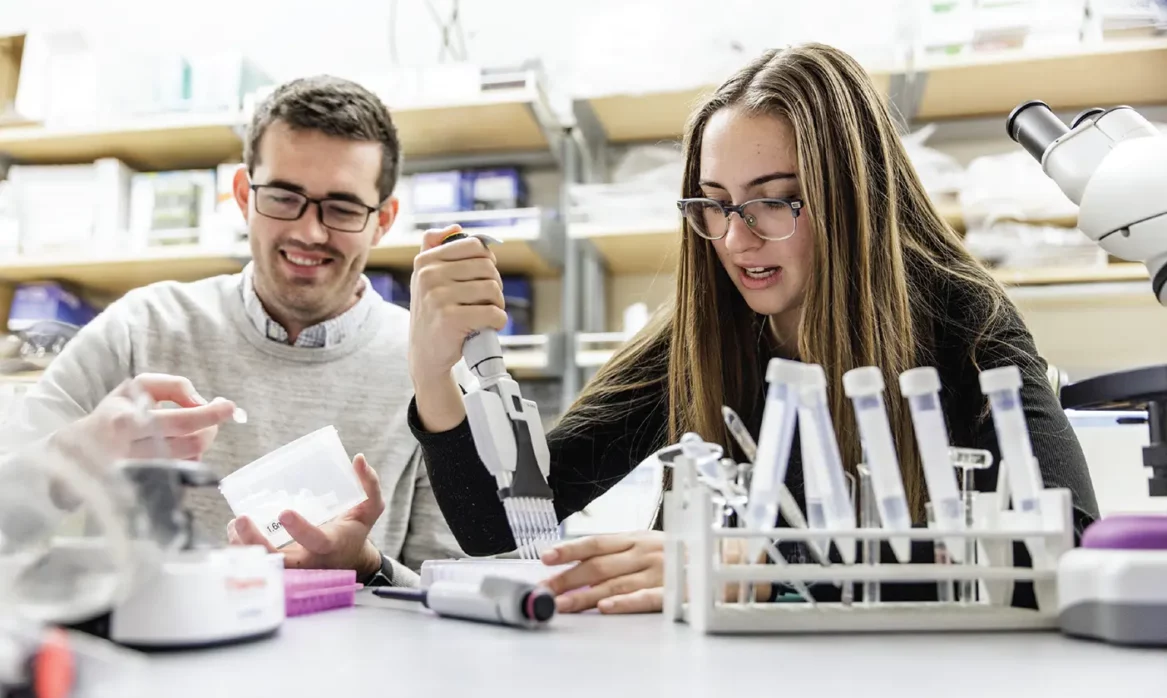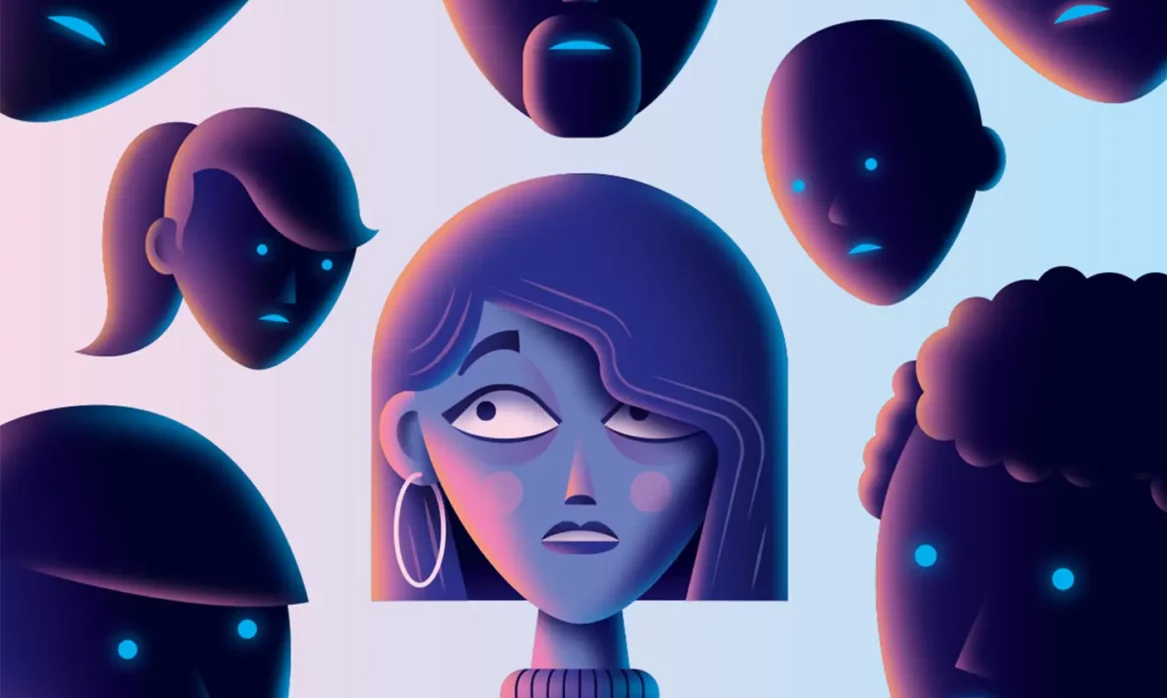Walking alone is different for women. A new BYU study has eye-catching proof.
Walking at night is complicated for women: find a walking buddy, let your friends know where you’re going, keep to well-lit areas. A BYU study by public-health professor Robert A. Chaney and coauthors Alyssa M. Baer (BS ’21) and L. Ida Tovar (BS ’21) illuminates significant differences between how men and women experience walking alone. The results are striking.

“Part of it was drawing from my own experiences and from those around me,” explains Baer about her interest in the project. She and the other researchers noted that women, more often than men, report fear of crime and sexual violence while commuting by foot.
Participants included both male and female BYU students. Each one was shown pictures of different college campuses and told to imagine they were walking alone. Their task was simply to click on areas in the photo that caught their attention. The team then compiled the results into a heat map, where they saw the most-clicked areas on the images glow red.
“We expected to see some variation” between the responses of the women and men, explains Baer. “But we were floored by how distinct the differences were.” Male participants focused on what was directly in front of them—often a fixed object. The heat map of female participants, however, glowed red at the peripheries. The women were more prone to scanning their surroundings, watching the bushes and unlit sections, and checking around and behind.
The study’s publication led to a flood of responses from people sharing their lived experiences. “People are resonating with it,” says Baer. The team has seen “many more stories” spreading on sites like Reddit and TikTok from women who also scan their surroundings when walking alone.
One letter noted how women’s visual patterns resemble military training “to assess threats and risk in certain environments”—almost as though they were under threat of attack. “A lot of women have this heightened sense of fear,” Chaney says. “Men don’t experience those things in the same way.”
The team hopes the study will invite a broader discussion on questions of equality, environmental safety, and women’s health. Data-backed information “allows the conversation to move forward in productive ways,” adds Tovar. “It would be really great to see it grow toward building a healthier environment.”












